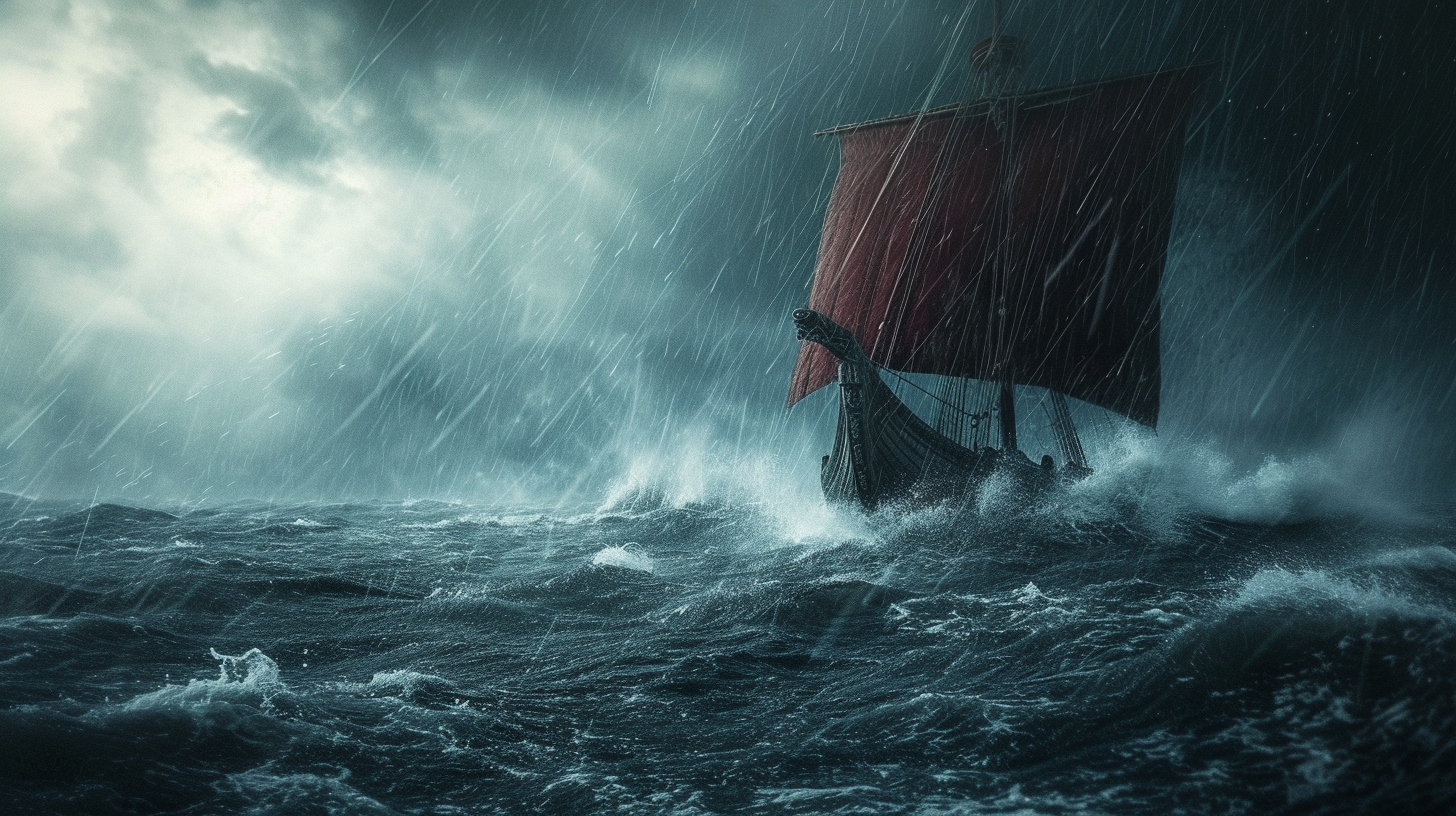
Longships: Revolutionizing Viking Warfare and Culture
The Viking Age
The Viking Age, spanning from the late 8th to the late 11th century, was a pivotal era in Scandinavian history. During this time, the Norse people – renowned for their seafaring prowess and warrior culture – left an indelible mark on Europe and beyond. At the heart of their legendary exploits was a revolutionary vessel: the longship.
Importance of the Longship
The longship was more than just a means of transportation; it was a game-changer that forever altered the course of Old Norse warfare and culture. This sleek and formidable craft enabled the Vikings to venture farther, strike harder, and establish their dominance on the seas and across distant shores.
Design and Construction of the Longship

Lightweight and Versatile
The longship was a masterpiece of naval engineering, combining lightweight construction with exceptional seaworthiness. Crafted from oak planks and held together by intricate woodworking techniques, these vessels were remarkably light yet sturdy enough to withstand the treacherous waves of the open ocean.
Advanced Ship-Building Techniques
The Vikings were skilled shipwrights, employing advanced techniques that allowed for the longship's unique design. The use of overlapping planks, known as clinker construction, and the incorporation of a shallow draft and narrow hull, enabled these ships to navigate shallow waters and even beach themselves with ease.
Naval Warfare Capabilities

Speed and Maneuverability
One of the longship's most formidable assets was its speed and maneuverability. Powered by rows of oarsmen and equipped with a single square sail, these vessels could outrun and outmaneuver their adversaries, enabling the Vikings to strike swiftly and retreat before their enemies could mount a proper defense.
Coastal Raids and Amphibious Assaults
The longship's shallow draft and lightweight construction made it the perfect vessel for coastal raids and amphibious assaults. Vikings could swiftly beach their ships, disembark their warriors, and launch devastating attacks on coastal settlements before disappearing back into the sea, leaving their victims in a state of terror and awe.
Facilitating Exploration and Expansion

Reaching New Lands
The longship's seaworthiness and capacity for long-distance voyages allowed the Vikings to venture far beyond their Scandinavian homelands. These daring seafarers explored and settled in regions as diverse as Greenland, Iceland, and even North America, expanding their horizons and establishing trade routes and settlements along the way.
Establishing Trade Routes
In addition to facilitating exploration, the longship played a crucial role in fostering trade and cultural exchange. Vikings could transport goods and resources over vast distances, establishing trade routes that connected the Norse lands with distant corners of Europe, Asia, and beyond.
Cultural Impact

Status Symbol and Source of Pride
To the Vikings, the longship was more than just a vessel; it was a symbol of status, pride, and identity. Owning and commanding a longship was a mark of wealth and prestige, and these ships were often adorned with intricate carvings and embellishments that reflected the owner's status and accomplishments.
Inspiring Myths and Legends
The longship's prowess and the exploits of its Viking crew inspired countless myths and legends that have endured through the ages. From the tales of Norse gods and heroes sailing across the vast oceans to the sagas of daring raids and epic battles, the longship has become an enduring symbol of the Viking spirit and their indomitable will.
Legacy and Influence

Shaping Maritime History
The impact of the longship on maritime history cannot be overstated. Its innovative design and construction techniques influenced the development of subsequent ship-building traditions, paving the way for future advancements in naval architecture and seafaring.
Enduring Fascination and Reverence
Even centuries after the Viking Age, the longship continues to captivate the imagination of people around the world. Its sleek lines, fearsome reputation, and the tales of adventure and conquest associated with it have earned it a place of reverence in popular culture, inspiring countless books, movies, and artistic interpretations.
Conclusion
The invention of the longship was a pivotal moment in human history, forever changing the course of Old Norse warfare and culture. This remarkable vessel's combination of speed, maneuverability, and seaworthiness enabled the Vikings to conquer the seas, explore new lands, and establish trade routes that connected distant civilizations. Beyond its practical applications, the longship became a symbol of pride, status, and identity, inspiring myths and legends that have endured for centuries. Even today, the longship remains an enduring icon of human ingenuity, adventure, and the indomitable spirit of exploration.
FAQs
- What was the purpose of the longship?
- The longship served multiple purposes for the Vikings, including naval warfare, coastal raids, exploration, and trade. Its design made it well-suited for swift attacks, long-distance voyages, and the transportation of goods and resources.
- How were longships constructed?
- Longships were constructed using advanced woodworking techniques, such as clinker construction (overlapping planks) and the use of lightweight oak. They featured a shallow draft, narrow hull, and a single square sail, enabling speed and manoeuvrability.
- What role did the longship play in Viking culture?
- The longship held immense cultural significance for the Vikings. It was a symbol of status and pride, with ships often adorned with intricate carvings and embellishments. The exploits of the longship and its crews also inspired countless myths and legends.
- How did the longship facilitate exploration and expansion?
- The longship's seaworthiness and capacity for long-distance voyages allowed the Vikings to explore and settle in distant lands, such as Greenland, Iceland, and even North America. It also enabled the establishment of trade routes that connected the Norse lands with distant civilizations.
- What is the legacy and influence of the longship?
- The longship's innovative design and construction techniques influenced the development of subsequent ship-building traditions, shaping the course of maritime history. Additionally, the enduring fascination and reverence for the longship have made it an iconic symbol in popular culture, inspiring countless artistic interpretations and works of fiction.








